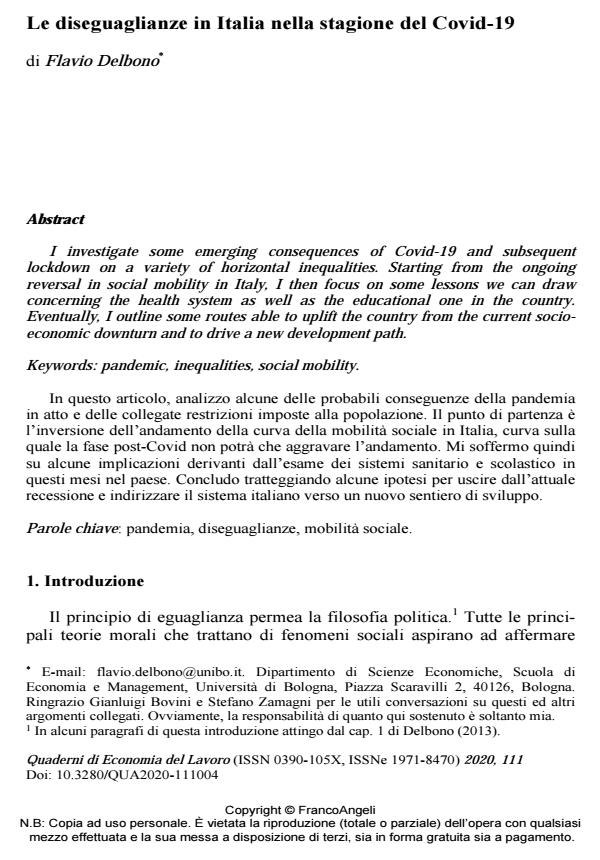Le diseguaglianze in Italia nella stagione del Covid-19
Journal title QUADERNI DI ECONOMIA DEL LAVORO
Author/s Flavio Delbono
Publishing Year 2021 Issue 2020/111
Language Italian Pages 14 P. 73-86 File size 168 KB
DOI 10.3280/QUA2020-111004
DOI is like a bar code for intellectual property: to have more infomation
click here
Below, you can see the article first page
If you want to buy this article in PDF format, you can do it, following the instructions to buy download credits

FrancoAngeli is member of Publishers International Linking Association, Inc (PILA), a not-for-profit association which run the CrossRef service enabling links to and from online scholarly content.
I investigate some emerging consequences of Covid-19 and subsequent lockdown on a variety of horizontal inequalities. Starting from the ongoing reversal in social mobility in Italy, I then focus on some lessons we can draw concerning the health system as well as the educational one in the country. Eventually, I outline some routes able to uplift the country from the current socio-economic downturn and to drive a new development path.
Keywords: Pandemic, inequalities, social mobility.
Flavio Delbono, Le diseguaglianze in Italia nella stagione del Covid-19 in "QUADERNI DI ECONOMIA DEL LAVORO" 111/2020, pp 73-86, DOI: 10.3280/QUA2020-111004